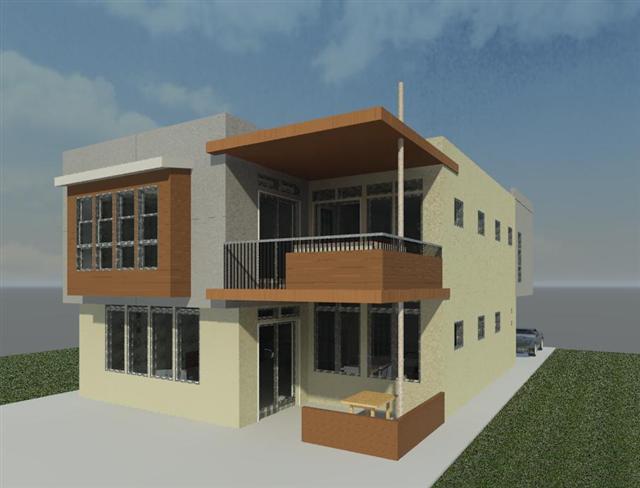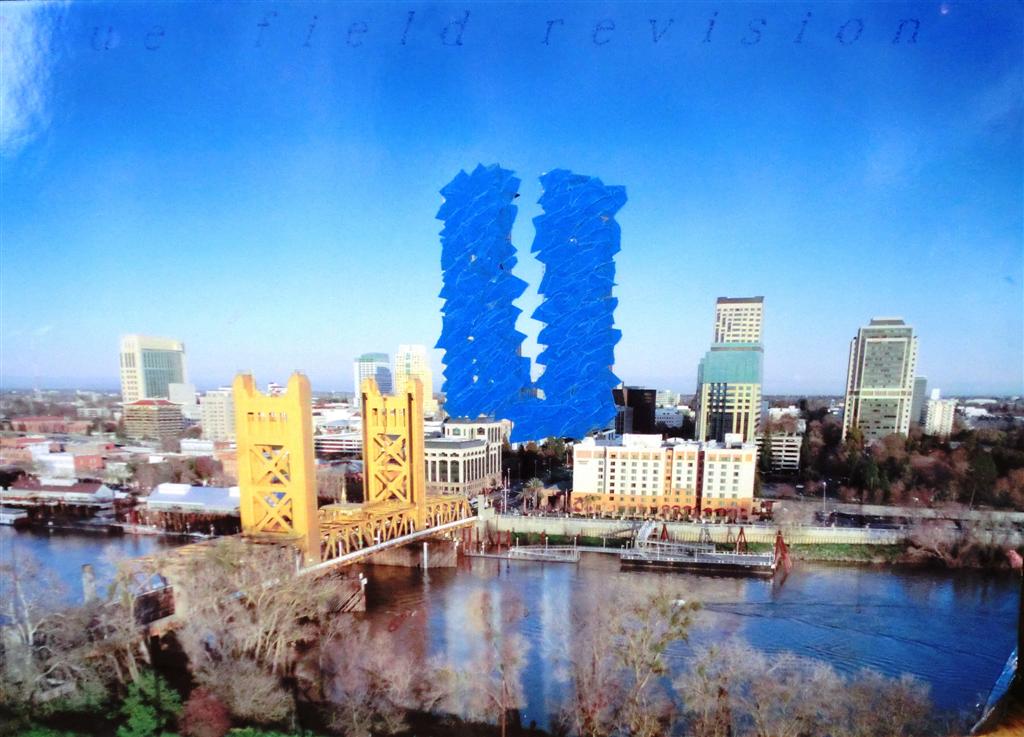Perhaps that helps explain why business has been such a struggle here ? 
Gettin’ Yours?
Color change based on what you Eat?
Pink food makes for a Pink Bird
Architects: Passion is the Driver!
Recent articles about Architecture have been not-so-upbeat of late. Reported the “fifth most useless major” a few months ago, meager earnings ($36,000) and soaring unemployment (13.9 percent) for recent grads; and today research by the National Survey of Student Engagement, architecture majors studied MORE hours per week than ANY OTHER MAJOR —more than physics, more than chemical engineering; almost twice as many hours per week as peers in journalism!
Behind the numbers, lies PASSION. That’s what drives people into the profession, that’s what makes them work so hard, and that what makes it so rewarding. The sad economy will pass … in the meantime, those of us in the architectural trenches share a secret smile when we hear most clients saying “… I really wanted to be an architect, but …” We get to turn people’s dreams, into places for people.
How cool is that!

Idea Echos
Idea Echos
When grand visions that involve the built environment die, a lot of detritus is left behind. Most of this material ends up in the trash; this installation is a ‘second life’ for two pieces from that stream of debris. These ‘re-rendered renderings’ are an attempt to capture ‘idea echos’ of a proposal to create here in Sacramento what would have been the largest residential building complex on the west coast – and in so doing examine the now faint echos of optimism, courage and ambition embodied in this form.
Last Dance of a Thousand Dots
An Architectural Vision is portrayed in a fashion to make it seem as real as possible. These pieces are intended to motivate (financial) commitment – and serve that purpose best if they have a visual power that helps suspend ‘disbelief’. The ‘hand’ that creates the images is by design ‘invisible’ – so it won’t take away from the illusion of reality. When grand visions die, they usually fade over time, represented here with Correction Fluid placed in Dots. Each ‘dot’ is one of the ‘do not’ that were part of the unfolding story – placed one by one by human hands until the original idea is obscured. What remains is the Idea Echo – portrayed as a ghost like presence on the skyline.
Idea Echos
Idea Echos
When grand visions that involve the built environment die, a lot of detritus is left behind. Most of this material ends up in the trash; this installation is a ‘second life’ for two pieces from that stream of debris. These ‘re-rendered renderings’ are an attempt to capture ‘idea echos’ of a proposal to create here in Sacramento what would have been the largest residential building complex on the west coast – and in so doing examine the now faint echos of optimism, courage and ambition embodied in this form.
Blue Field Revision
 A particular shade of blue is associated because of a common tape with ‘masking’. “Big ideas’ die not from a ‘bang’ but from a ‘thousand cuts’; here represented by many pieces of blue tape which over some unknown time, placed by unknown hands, gradually obscured the ‘developer vision’ until it became a ‘blue field’. Renderings are a key tool in taking ‘visions’ to ‘reality’ – a long and twisting path even in the best of circumstances. This picture was originally intended at a tool to make a particular Big Idea seem real enough to inspire people to commit time and money to it. The dimming of that idea is portrayed as a process of ‘masking’ which continued until all that is left is an ‘Idea Echo’. This remnant is still with us – able to stirs our collective memory of a time in Sacramento that was not very long ago but very different from today.
A particular shade of blue is associated because of a common tape with ‘masking’. “Big ideas’ die not from a ‘bang’ but from a ‘thousand cuts’; here represented by many pieces of blue tape which over some unknown time, placed by unknown hands, gradually obscured the ‘developer vision’ until it became a ‘blue field’. Renderings are a key tool in taking ‘visions’ to ‘reality’ – a long and twisting path even in the best of circumstances. This picture was originally intended at a tool to make a particular Big Idea seem real enough to inspire people to commit time and money to it. The dimming of that idea is portrayed as a process of ‘masking’ which continued until all that is left is an ‘Idea Echo’. This remnant is still with us – able to stirs our collective memory of a time in Sacramento that was not very long ago but very different from today.
Partner or Parasite? How do you feel about your Software
If you’re in the business of creating professional drawings, I’ve got a question:
Does your software vendor feel more like a partner – or a parasite?
A decade ago, I didn’t mind paying what at the time seemed a fairly high price for unfriendly but workable software. After all, it’s a necessary tool. Back then, expensive professional tools used to last a long time. No more it seems. These days, software from companies like Autodesk ‘expire’ after a few years – meaning you can’t reinstall the software if your computer crashes. In fact, a ‘subscription’ (yearly fee whether you want updates or not) is now required. To make that stick, the file format is intentionally not backward compatible. And of course software costs continue to escalate – even as business continues to be poor.
Am I the only one shocked at $13,000 for a ‘required’ upgrade for 3 seats? Buy by March: ‘or else’!
Am I the only one that cringes at being asked to sign up for an annual subscription for upgrades that I don’t need or want?
Am I the only one with a feeling that if a fraction of the 86,000 members of the AIA put up a fraction of what we are each spending each year on software, we could buy or develop our own tools – and control our destiny and costs?
Fees down, costs up; upgrades forced by threats of being orphaned.
Am I the only one with a creepy feeling that we have a parasite infesting our profession?
It’s COMPLICATED
Today I got an invite to attend a class in accessibility. This is a very important topic for Architects! In California in fact, this is the ONLY topic in the entire field of the design of buildings and places that requires continuing education … not fire safety, exiting, material durability, energy use, structural stability, health safety and welfare …. nope, none of those require any continuing education to maintain a professional license here. Just accessibility.
The class was going to be held full time for four full days … and practically speaking, perhaps four days is barely enough to cover the thousands of pages of codes, standards and regulations just related to accessibility …
Four days of detailed training in this area of course would provide no assurance that any resulting design would not be subject to legal claims brought by one of the specialist attorneys that have thrived in the complex realm of accessibility …
Are the accessibility standards as they presently exist too complex for mere mortals ??? Design professionals and building owners both want buildings and spaces to be available for everyone to use and enjoy … that just common sense, and good business. Perhaps if standards were clear it would result in greater accessibility for all, with fewer dollars diverted to claims and the huge costs involved in that legal dance.
Unintended Consequences
At the UC Davis Picnic Day recently one exhibit that caught my attention was “Termite Trails”. Someone accidentally discovered that live termites will follow any squiggly line drawn with a blue BIC pen. Curious. Only that brand, and only that color works the magic. It turns out there is something in the ink in blue BIC pens that mimics a termite hormone. Fascinating.
I wonder what OTHER unintended consequences may result from the formulation of that blue ink … or the thousands of other innocent seeming concoctions that surround us every day.
The Applied Architect
Unsettled days are upon us. The change in weather – grey and damp days becoming more common – seems aligned with the increasingly common images of discontent, disconnection and disturbances that fill the news. There seems a vagueness that clouds the unfolding conversations. Is something big brewing? Are the wheels coming off the bus?


